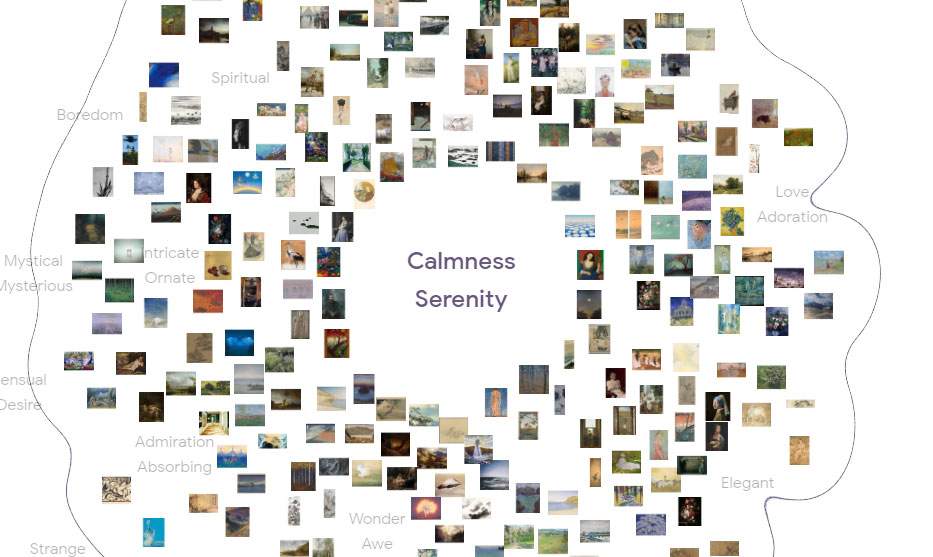What emotions does a work of art evoke? It is from this question that Google Arts & Culture’s project, in collaboration with the University of California at Berkeley, entitled Art Emotions Map was born: a true atlas of emotions that focuses precisely on the emotions evoked by artistic masterpieces from every era and culture.
1,300 people were asked to describe how they felt in front of 1,500 different paintings: twenty-five different emotions were defined that people associated with the works they saw. These emotions were then placed on an interactive map, placing works of art that provoked specific emotions in groups.
The emotion atlas will provide data to scientists at the University of California at Berkeley useful for advancing the scientific study of human emotions.
By moving the cursor over a specific emotion among the twenty-five available in the map, it is possible to understand what artworks are associated with it. For example, Calm and Serenity is associated with Masterpieces such as Vincent van Gogh ’s Flowering Plum Tree (100 percent calm and serenity) or Édouard Manet ’s Game of Croquet (44 percent calm and serenity); Anxiety is associated with Alessandro Magnasco’s Landscape with Shepherds (100 percent) or Lorenzo Lotto ’s Portrait of Andrea Odoni (100 percent) or Rembrandt’s Christ in the Storm on the Sea of Galilee (40 percent).
To access the interactive map: https://artsexperiments.withgoogle.com/art-emotions-map/
 |
| What emotions does a work of art arouse? Google launches interactive map |
Warning: the translation into English of the original Italian article was created using automatic tools. We undertake to review all articles, but we do not guarantee the total absence of inaccuracies in the translation due to the program. You can find the original by clicking on the ITA button. If you find any mistake,please contact us.